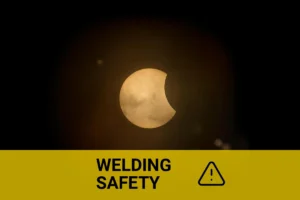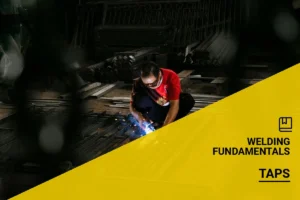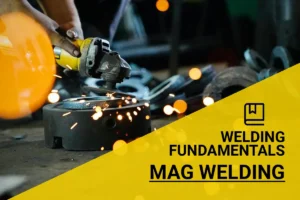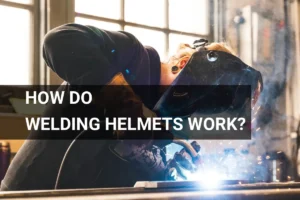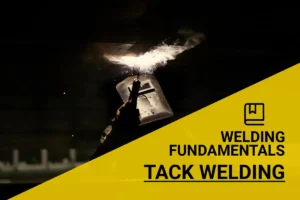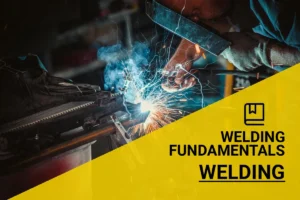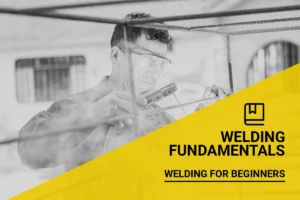What is 3G Welding? Understanding Techniques, Applications, and Tips
Published on: June 18, 2025 | Last modified: March 4, 2025
By: Joe Carter
3G welding refers to a vertical welding position where you weld up and down. It’s most commonly used for pipe and structural welds.
One question I get asked a lot is, what is 3g welding? It’s important because this technique tests your skills in controlling heat and maintaining a steady hand. From my own experience, mastering 3G welding can truly elevate your abilities and open doors to more complex projects.
In this guide, I’ll cover various key aspects like how 3G welding works, its types, steps to achieve it, factors that affect it, unique challenges it brings, aftercare, inspection tips, applications, and even some alternative options. You’ll find detailed insights about what is a welding position designated 3G and comparisons to other positions, like 4G and 5G welding, so you’ll get a complete picture.
Contents
- What is 3G Welding?
- How Does 3G Welding Work?
- Types Of 3G Welding
- Steps to Achieve 3G Welding
- Unique Issues in 3G Welding
- Factors Affecting 3G Welding
- Challenges in 3G Welding Positions
- Aftercare, Inspection, and Advanced Tips for 3G Welding
- Applications Of 3G Welding
- Other Options You Can Consider
- Frequently Asked Questions (FAQs)
- Conclusion
- Additional Reading
What is 3G Welding?
This welding position is vertical, welding up and down. It requires skill to manage gravity-driven issues. You’ll find it in structural frameworks and shipbuilding, where strong, reliable joints are crucial. A crucial aspect of achieving such strong joints in welding is the effective execution of groove welds.
How Does 3G Welding Work?
3G welding refers to the vertical welding position, where you weld upright. It’s commonly used in stick welding, MIG (Metal Inert Gas), and TIG (Tungsten Inert Gas). In this position, the weld bead tends to sag due to gravity, so you must control the heat and travel speed precisely. According to the Welding Positions and Joint Types, mastering this position is essential for achieving strong vertical seams.
This welding style requires the welder to maintain a steady hand and burn rate while moving the electrode upward. Proper technique ensures a uniform bead, which is vital in structural applications. It’s important to understand how angles and positions influence the flow of molten metal—angles can significantly affect the weld’s strength.
I’ve been down this road before, and mastering 3G welding takes practice. You might face frustrations, but getting certified can open new job opportunities. Remember, working in the 3G position isn’t just skill—it’s art, technique, and understanding how heat and materials behave under pressure.
Types Of 3G Welding
What are the different types of 3G welding?
-
Gas Tungsten Arc Welding (GTAW)
GTAW uses a non-consumable tungsten electrode to produce the weld. The welder creates a metal joint on the vertical surface. To start, strike an arc, control the heat, and add filler material for a strong weld. Exploring the components of a GMA welding system can further enhance your understanding of this welding method.
-
Shielded Metal Arc Welding (SMAW)
SMAW, or stick welding, employs an electrode coated with flux to protect the weld pool. When working on vertical surfaces, the electrode provides heat and shielding. Maintain the angle and speed as you move across the weld line to complete the process. Understanding the composition of welding rods can enhance your welding technique. For more details on the materials used, explore what are welding rods made of here.
-
Flux-cored Arc Welding (FCAW)
FCAW uses tubular wire filled with flux to create a protective gas while welding. This method allows vertical welding by controlling the wire feed rate and angle. Keep a steady hand and monitor the arc length constantly for optimal results. Ensure you know how many amps your welder uses to maintain efficient operation.
-
MIG Welding (Metal Inert Gas Welding)
MIG welding employs a continuous wire feed as an electrode. In the vertical position, adjust the speed and angle for accuracy. Maintain a consistent speed while pushing the gun toward the weld direction.
-
Submerged Arc Welding (SAW)
SAW involves welding beneath a blanket of flux. When tackling a vertical joint, the flux protects the weld from contamination. Ensure the flux is properly placed to achieve a smooth, even weld without defects. Mastering techniques for vertical welding can significantly enhance your welding outcomes by preventing issues like slag inclusion and poor fusion.
We’ve wrapped up the types of 3G welding here. Next up, we’ll look at the steps to achieve 3G welding.
Steps to Achieve 3G Welding
Now, we’ll cover the steps of 3G welding, guiding you through a specific technique.
-
Set Up Your Equipment
Start by adjusting your welding machine to the correct amperage. For 3G welding, an amperage level between 70-140 A (Amps) works best, but check your electrode manufacturer’s specs for exact numbers. Select the right electrode; E7018 is a common choice. This helps create a strong weld pool and ensures penetration into the base metal.
Next, position the workpiece at a vertical angle. The 3G position refers to a vertical weld, so ensure your workpieces are clamped securely. Use a backing bar if needed to maintain proper arc and prevent burn-through on the other side!
-
Initiate the Arc
Strike the arc carefully, using a short arc technique. Maintain a distance of about 1/8 inch (3.1 Mm) between the electrode and the work surface for optimal stability. If the arc is too long, you’ll see excessive spatter and poor penetration, leading to weaker joints.
Observe the bead consistency as you progress. Aim for a smooth, even bead. Moving too fast can cause undercutting and overly smooth finishes. So, pace yourself; a slower speed might yield better results!
-
Weave the Bead
Incorporate the weaving technique into your workflow. For 3G welding, a side-to-side or circular motion guides the weld pool for better fusion with the base metal. Use a zig-zag pattern that allows the puddle to flow properly, creating a contour. Ideally, this results in a concave appearance.
Maintaining the right travel speed is crucial. Moving too slowly can lead to excessive heat buildup. Aim for about 1-3 inches (2.5-7.6 Cm) per second. It may take practice to find the sweet spot!
-
Control Your Heat Input
Monitor your heat input throughout the welding process. For 3G welding, keeping consistent heat ensures strong penetration without warping the metal. It’s important to follow proper welding guidance and adjust your voltage settings as necessary, typically around 20-30 V (Volts) for a good bead appearance.
Exploring techniques to improve visibility during welding can also enhance the quality and precision of your work.
If you notice the base metal warping, reduce your speed and heat slightly. Finding this balance often requires trial and error. Keep a close eye on your weld pool’s shape—it’ll tell you everything you need to know!
-
Finish the Weld
When you reach the end of the weld, gradually lift the electrode to complete the weld pool. Let it cool for a moment; cooling too quickly can create cracks. Lastly, clean the bead using a wire brush to remove slag or impurities.
After cooling, inspect your weld. A good weld should have a uniform bead width and height, with no undercuts or excessive spatter. Don’t rush this part; take pride in your work. Remember, a great finish leads to better overall strength!
So far we covered the process for mastering 3G welding techniques. Next, let’s look at the distinct challenges in 3G welding.
Unique Issues in 3G Welding
Let’s look at specific challenges you might face in 3G welding.
-
Positioning Challenges
3G welding often makes it hard to keep the arc stable in the vertical position. Watch for uneven bead formation to identify this issue. Adjust your angles and speeds while practicing for consistency.
-
Fillet Weld Difficulties
In 3G welding, making consistent fillet welds can be challenging. Proper fit-up (Alignment) is essential for clean welds. Ensure minimal gaps and practice different techniques to find your rhythm.
To refine your skills, you may consider learning about setting up a Lincoln Electric welder.
-
Slag Removal Complexities
3G welding can lead to slag build-up, which forms inclusions if not cleaned properly. Check for slag adherence after welding. Use a wire brush, chipping hammer, or grinder to remove all slag before your next pass.
-
Heat Distribution Issues
Heat tends to concentrate in vertical welds due to gravity. In 3G welding, this can cause overheating or burn-through. Use lower current settings and work at a slower pace for even heat distribution.
-
Welding Distortion Risks
3G welding can cause warping due to thermal expansion. If you notice misalignment, reevaluate your clamping techniques. Applying heat during and after welding can help maintain structural integrity. To enhance your fundamental understanding, consider exploring how to weld for beginners.
We covered unique challenges in 3G welding. Next, we will cover the factors influencing 3G welding performance.
Factors Affecting 3G Welding
What factors influence the effectiveness of 3G welding?
-
Material Thickness
Thicker materials need higher heat settings. For example, a base metal that’s 10 mm (0.39 Inch) thick requires 180-240 amps for proper fusion.
-
Welding Position
The 3G welding position is vertical up. This positioning affects bead shape and penetration. Practicing here builds skills for more complex positions.
-
Environmental Conditions
Wind can affect arc stability. If you’re welding outside, shield against gusts to ensure quality. Moist conditions can also introduce contamination.
-
Operator Skill Level
More experienced operators produce consistent welds. Training and practice enhance technique, reduce defects, and increase productivity.
-
Welding Equipment Settings
Proper settings minimize spatter and ensure good penetration. Adjust voltage and wire feed to match the material’s thickness and type.
You should now have a good understanding of the elements influencing 3G welding. In the next part, we’ll discuss the difficulties in 3G welding positions.
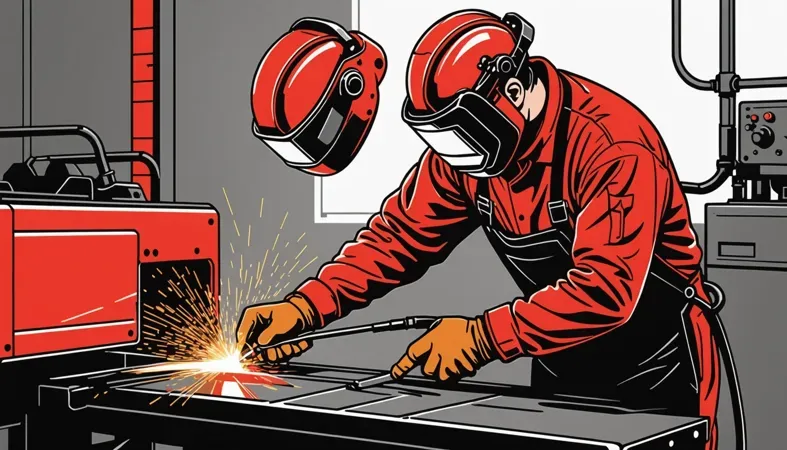
Challenges in 3G Welding Positions
3G welding involves vertical setups, which can present unique hurdles. Here are some challenges welders often face:
| Challenge | Impact | Possible Solutions |
|---|---|---|
| Arc Stability | Can lead to inconsistent beads and poor penetration. | Practice maintaining a steady hand and adjust travel speed. |
| Heat Concentration | Risk of burn-through and warping in thinner materials. | Use lower amperage settings and keep travel speed in check. |
| Slag Inclusion | Can create weak joints and internal defects. | Thoroughly clean the weld area and remove slag effectively. |
| Bead Appearance | Affects the visual integrity of the weld. | Maintain a consistent arc length and adjust your technique. |
| Vertical Set-Up | Positioning can be awkward, leading to fatigue. | Work on muscle training and comfort adjustments for long jobs. |
Aftercare, Inspection, and Advanced Tips for 3G Welding
Here’s important advice to keep your 3G welds strong and reliable.
Aftercare Tips
After 3G welding, cool the weldment slowly. Avoid rapid cooling, as it could cause cracks. It’s also helpful to cover welded areas with a protective cloth to minimize oxidation and prevent dust contamination for at least 24 hours.
Inspection
Inspect your 3G welds for undercut and overlap at precise quality checkpoints. Visual tests often use a light source; 600-lumen LED flashlights work well. I always check with a Fischer XRF Analyzer to assess the composition of fillers, ensuring they match the metal types.
Expert Tips
If this isn’t your first time in the 3G position, push your parameters by increasing travel speed by 10 mm/min. Experiment with patterned motions for smoother bead consistency. When using 1.2 mm welding wire, maintain a voltage between 26-28 volts for high weld penetration. Save those settings for future reference!
Applications Of 3G Welding
I’ve seen people use 3G welding for structural tasks. However, it has many applications, such as:
- Bridge Construction: It’s excellent for welding structural steel in bridges. 3G ensures strong vertical joints needed for heavy loads. Engineers trust it for durability.
- Shipbuilding: It’s used to weld hulls and superstructures. Its ability to handle varying thicknesses and vertical positions makes it ideal. Many shipyards prefer it for efficiency.
- Heavy Equipment Manufacturing: It’s perfect for chassis fabrication. 3G enables strong welds that withstand vibration and stress, setting a standard in the industry.
- Building Frames: It’s used in vertical work on steel beams. It’s essential for stabilizing skyscraper frames and is surprisingly common in commercial construction projects.
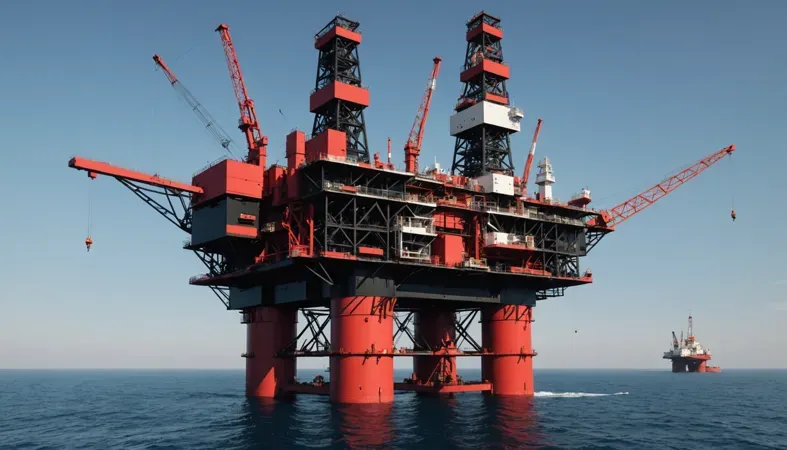
Other Options You Can Consider
If you’re looking for alternatives to achieve similar results as 3G welding, there are several methods worth considering. Techniques such as 4G welding and 5G welding might be preferred in different situations like vertical and overhead applications. Through trial and error, I’ve discovered that using the right rod, such as E7018 for 4G or E6010 for 5G, can make a big difference in your weld quality.
Moreover, you could also explore MIG welding when working on projects requiring speed and efficiency. It’s less labor-intensive and easier for beginners. Options like flux-cored welding, using brands like Lincoln Electric, offer flexibility in tough environments, particularly outdoors. These methods deliver great results without sticking strongly to the 3G technique. When exploring the diverse techniques available, it is worthwhile to consider the advantages and applications of submerged arc welding.
Frequently Asked Questions (FAQs)
Here are some questions I typically get asked:
What is a 3G Welder Qualification?
Yes, a 3G welder qualification measures your ability to weld in the 3G position. This position requires you to weld vertically. Successful certification ensures you can join metals adequately in demanding environments, which is crucial for structural integrity.
What is a 4G Weld?
A 4G weld is a horizontal weld performed on a plate or pipe. This position helps you tackle applications like overhead welding more effectively. Mastering 4G welding increases your versatility and adds significantly to your skill set.
What is 5G in Welding?
5G in welding refers to the horizontal position of a pipe. It challenges welders since the pipe remains stationary while the workpiece is rotated. This technique is essential for oil, gas, and petrochemical industries; it’s vital for ensuring the weld’s quality and durability.
What is the 5G Welding Position?
The 5G welding position refers to welding a pipe that doesn’t change its position during the weld. Understanding this position is critical for any welder as it adapts to different challenges in real-world applications.
What is 6G in Welding?
6G in welding represents a combination of vertical and horizontal positions for pipes at a 45-degree angle. This challenging position is key in certification processes. It tests your adaptability and skill, making it essential for pipeline workers and rig welders.
Conclusion
You made it to the end of this article on what is 3G welding. We covered the basics of 3G welding, how it works, types of 3G welding, steps to achieve it, factors that affect the process, unique issues you might face, aftercare tips, inspection methods, and applications. Plus, we also discussed other options and answered some frequently asked questions.
So, what is 3G welding? In simple terms, it’s a vertical position welding process where you weld seams vertically, often using fillet or groove techniques. It’s crucial for certain jobs and environments, offering both strength and versatility. Contact me if you’d like more guidance on the ins and outs of 3G welding or have any more questions.
If you’re eager to deepen your understanding of welding as a whole, we invite you to check out What is Welding for further insights.
Additional Reading
- Lincoln Electric. (2020). The Procedure Handbook of Arc Welding (15th ed.). Cleveland, OH: Lincoln Electric Company.
- Parmar, R. S. (1997). Welding Engineering and Technology. New Delhi, India: Khanna Publishers.
- American Welding Society. (2020). AWS A3.0: Standard Welding Terms and Definitions. Miami, FL: AWS.
Joe Carter is a retired welding professional with over 40 years of hands-on experience in the industry, spanning ship repair, structural welding, and even underwater projects. Joe is a master of MIG, TIG, and Stick welding. Passionate about mentoring the next generation of welders, Joe now shares his decades of expertise and practical insights to help others build rewarding careers in welding.
3G Welding, American Welding Society, MIG Welding, Pipe Welding, Structural Integrity, Structural Welding, Welding, Welding Applications, Welding Positions, Welding Techniques, Welding Wire
